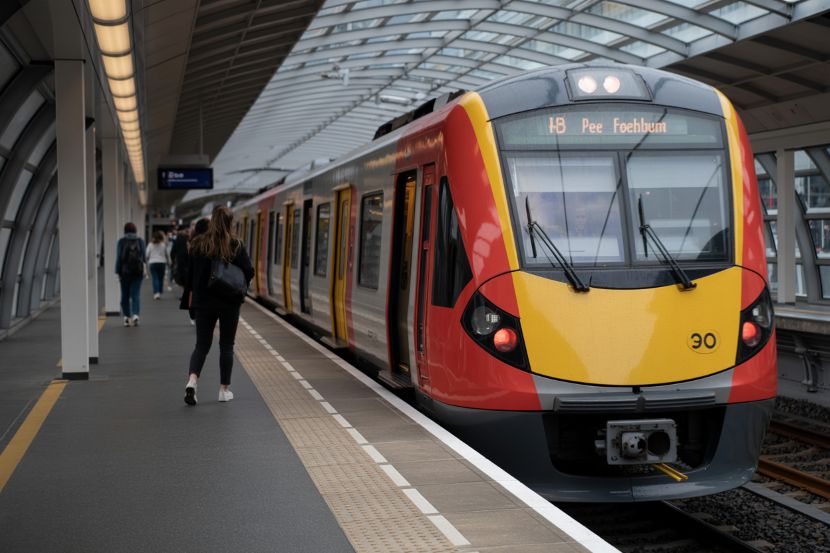Published on
October 7, 2025
Belgium’s national railway operator, SNCB, is making significant changes to its ticket pricing system that could benefit up to 80% of train travelers. Starting from October 15, 2025, passengers traveling during off-peak hours, on weekends, and those who commute regularly, will find fares much more affordable. The most notable feature of the overhaul is the introduction of the Train+ discount card, designed to help travelers save up to 40% on certain trips, along with other perks.
This is the first time in 30 years that such a dramatic shift in pricing has been implemented, as SNCB looks to make train travel a more attractive option and increase ridership by 5-9% in the next three years. Despite some criticisms regarding the complexity of the new system, the changes are seen as a step in the right direction for Belgian rail passengers.
Key Features of SNCB’s New Pricing Model
The new model introduces several features that promise to make traveling by train more affordable, especially for frequent passengers and those traveling at non-peak times.
Discount Card for Regular Travelers: The Train+ card will offer a 40% discount on trips during off-peak times, which include early morning hours, midday hours, and evenings, along with weekend travel. Passengers who buy this card will pay no more than €14 for a one-way journey. Certain groups like youths, seniors, and those eligible for increased social benefits will only pay up to €5.50 per ticket. The Train+ card will cost between €4-€6 per month or €32-€48 annually.Fare Calculation Based on Kilometers: SNCB is shifting from a flat fare to a pricing model based on distance traveled. This ensures that passengers only pay for what they travel, which could significantly lower prices for short trips.Maximum Fares for Long Journeys: For longer trips, SNCB is capping fares at a distance of 120 km instead of the current 150 km. This will reduce prices for longer routes by 20%.Additional Discounts for Specific Groups: People under 26 years, those aged 65 and older, and BIM (increased social benefits) beneficiaries will receive an extra 40% discount.Will Passengers Face Complications?
While the changes are expected to benefit the majority of travelers, there are some concerns about how easy it will be for passengers to navigate the new system. The TreinTramBus, a Flemish public transport users’ association, has voiced concerns about the complexity of the new pricing model.
Confusion Over Peak vs. Off-Peak: One of the main sources of confusion may be the distinction between peak and off-peak hours. Some passengers might find it difficult to keep track of the changing schedules and how they affect fare discounts. In some instances, a journey may qualify as off-peak when boarding later at a station, even though it was a peak-hour train at the starting station.Discount Combinations: Although discounts can be combined, passengers may find the system confusing. For example, combining a 40% discount with another 40% discount might sound like an 80% total, but in reality, it results in a 64% discount.
Despite these concerns, the association has acknowledged the value of the Train+ card for regular travelers. If you take the train frequently, it’s clear that the card offers substantial savings.
What Should Travelers Do?
For those planning to take advantage of the new pricing, here are some tips to make the most of the changes:
Get the Train+ Card: If you’re a regular traveler, purchasing the Train+ card can save you a significant amount. The card gives you access to 40% off during off-peak hours and weekends, which can easily pay for itself if used frequently.Check Timetables Carefully: Since there are several factors that determine when fares are cheaper, it’s important to plan ahead and be mindful of peak and off-peak hours. Train timetables and pricing schedules should be reviewed carefully to avoid any confusion regarding ticket prices.Consider Your Travel Route: With the introduction of the per-kilometer pricing, travelers on short routes might benefit the most from this change. For longer journeys, make sure you understand the new maximum fare cap of 120 km to see if it applies to your trip.Watch for Promotions: SNCB might offer additional promotions, so keep an eye out for any limited-time offers that could further reduce your ticket prices.Final Thoughts
While the shift to a distance-based fare system and the introduction of the Train+ card are bound to bring substantial savings for the majority of Belgian train passengers, SNCB must work to ensure that these changes are clear and easy to navigate. With efforts to encourage more sustainable travel, the railway company is positioning itself to capture a larger share of the travel market in Belgium. It will be interesting to see whether the Train+ card becomes a go-to for frequent travelers and whether the 5-9% increase in ridership goal is met.
